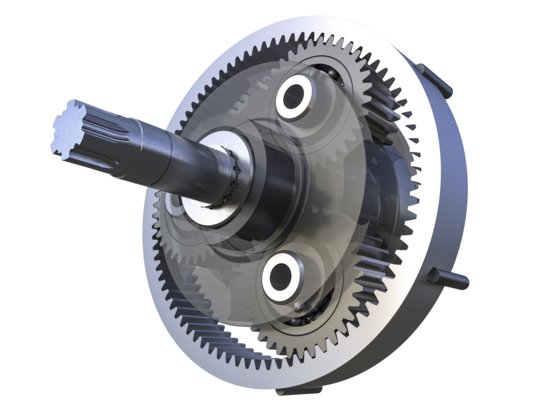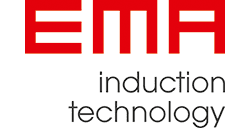
The process developed by EMA Indutec with regard to the inductive heat treatment of carburized ring gears for planetary gearboxes requires, in addition to the technical expertise, close coordination with the soft machining. Once optimization has been completed, inductive fixture hardening can significantly reduce subsequent hard machining. This saves time and costs.
The new process combines the known benefits of induction heating/hardening with the pros of a press hardening process. To overcome further rework after heat treatment operations EMA Indutec has delivered several induction fixture hardening machines – mainly for round and cylindrical workpieces such as sliding sleeves or ring gears. The previously carburized ring gear located on a workpiece carrier is heated homogeneously to austenitizing temperature by means of an induction coil by a magnetic field. Due to physics the ring gear expands (approx. 1 % volume increase). After the ring gear reached the temperature, the so-called calibration mandrel is driven into the ring gear. The calibration mandrel gives the ring gear the shape and position tolerances. By means of the four independently operating showers, the ring gear is immediately quenched and cooled down to near room temperature. By different pressures and shower times, the distortion behaviour can be controlled. Due to the controlled cooling process, the ring gear shrinks firmly on the calibration mandrel.
Conventionally, the ring gear is withdrawn from the calibration mandrel by means of hydraulic cylinders under great force. This not only leads to high wear on the calibration mandrel. Also, the desired accuracy values on the workpiece are often not achieved. The result: lengthy and expensive grinding and cleaning processes. Inductive fixture hardening reduces these to a minimum. In contrast to conventional press hardening, inductive fixture hardening inductively heats the ring gear on the calibration mandrel to approx. 180 °C. Due to the renewed thermal expansion, the ring gear “grows“ minimally. This creates a small gap between the internal teeth of the ring gear and the calibration mandrel. The ring gear can now be pulled off the calibration mandrel without any force. With this method, any wear on the teeth of the calibrated ring gear and the calibration mandrel is avoided.
Another advantage is that the process can be extended by an additional tempering station. As a result, the desired final hardness can be achieved and there is no investment necessary for a separate huge and expensive tempering furnace. The ring gear now has the desired shape and position tolerances, which it has received as a result of the fixtures tools like calibration mandrel, upper and lower fixture during curing.
Due to the achieved accuracy in the 0.05 mm range (axial runout, parallelism and roundness in several levels), the internal toothing of the ring gear has almost the final contour. Another special feature of this process, in addition to the reduction of hard machining to a minimum, is the high surface quality achieved. Since the heat treatment takes place under a protective gas atmosphere, the scale on the surface is avoided. This saves customers subsequent cleaning processes of the ring gear, such as sandblasting. In contrast to classic quenching using oil as quenchant, EMA relies on a water-polymer solution for quenching. A washing machine to clean the ring gears from oil is thus eliminated. In addition to the expertise in inductive fixture hardening, customers benefit from inductive hardening of their internally toothed workpieces, as well as from the know-how through decades of experience in the development of tailor-made heat treatment processes.
We will be pleased to answer your questions and advise you on your specific challenges.
